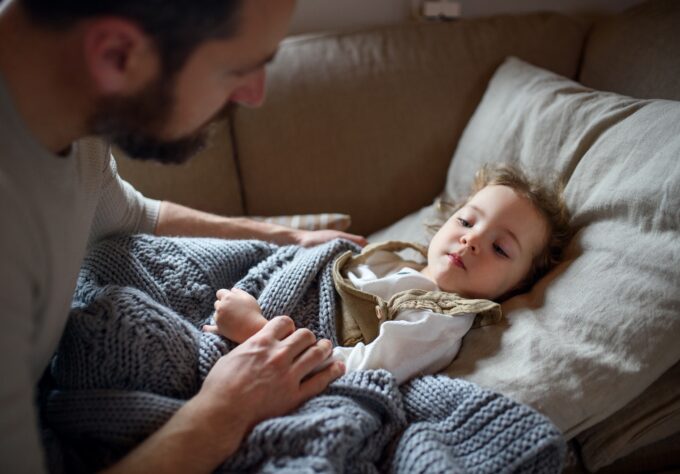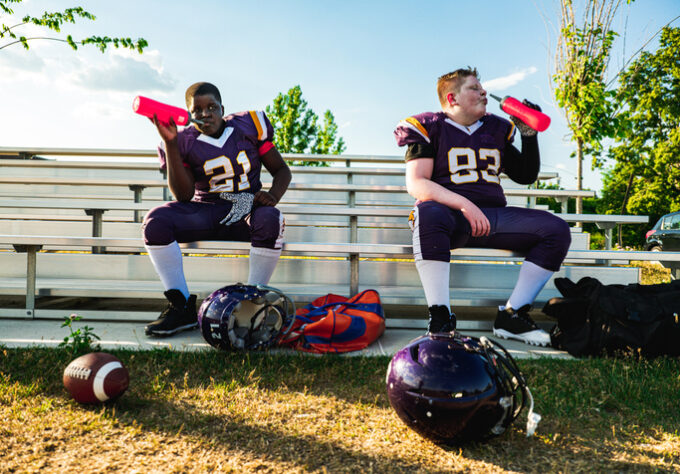What Is Vocal Cord Dysfunction?
When a pre-teen or teenager experiences trouble breathing while exercising or playing a sport, many doctors and parents are quick to diagnose the child with asthma.
But in some cases, it’s not asthma at all — it’s vocal cord dysfunction, a condition that occurs when the vocal cords do not open correctly. The symptoms of the condition are very similar to asthma, with a child experiencing difficulty breathing or coughing and wheezing.
The difference, however, is that vocal cord dysfunction doesn’t improve with a rescue inhaler or a prescription steroid. And for some children, the condition is never diagnosed because, frustrated and distressed, the child quits the activity.
But the good news is that vocal cord dysfunction can be diagnosed and treated with the correct therapy.
Understanding the Symptoms
“Children with vocal cord dysfunction often describe tightness as you’d find in asthma, but opposed to being in the chest, it’s in the upper chest or throat area,” said Dr. Patrick Barth, who specializes in pediatric otolaryngology at Nemours Children’s Health System. “They describe not being able to get air in and sometimes out. The only thing that seems to resolve it is by stopping the activity.”
The other symptoms, besides trouble breathing, coughing and wheezing, include throat tightness, voice changes and hoarseness.
Children with the condition tend to have more symptoms when they are in competition or pushing themselves physically — not necessarily being at a practice. That’s because many of these children are high-performing athletes who are at the top of their sport, and anxiety can play a role in the condition.
“These children tend to be Type A personalities,” Barth said. “Many excel both in athletics and academics.”
The condition is generally more common in females, but also seen in males — no matter which sport they play.
And although the condition is generally seen in highly competitive athletes, it also can occur in non-athletic children. Certain triggers, including odors, can cause it to surface in children who have underlying psychiatric or anxiety issues.
“Anxiety can play a role in this, and on occasion, these children have baseline anxiety or have more things going on in their lives than is immediately apparent,” he said.
Getting Diagnosed
Unfortunately, there’s no blood test or X-ray that can diagnose vocal cord dysfunction. One clue for parents that their child’s condition could be vocal cord dysfunction — and not asthma — is that the child doesn’t respond to a rescue inhaler.
But most of the time, the diagnosis is based on exclusion and history, Barth said.
“A good pulmonologist will make sure nothing is going on from a cardiac standing and make sure this is not a form of asthma,” he said.
When patients come to his office, Barth will place a fiber optic scope in a child’s nose and take a look at the child’s larynx. If that appears normal, the next step involves an exercise test.
“I will put a child on a bike and measure from catabolic [aerobic] standpoint and transition to anaerobic while using the scope while the child is on the bike,” Barth said.
That test can help diagnose the condition — and lead to finding a way to treat it.
Finding Treatments
Unlike asthma or other conditions, treatment doesn’t come from a medicine bottle.
“It does take some effort to treat this condition,” Barth said. “Just making the diagnosis doesn’t solve the problem. This is not a one and done — you can’t take a pill and suddenly you’re better.”
Instead, vocal cord dysfunction is treated with voice or speech therapy as well as breathing exercises.
“They can do these while competing, and it gives them better control over their breathing,” he said.
At Nemours Children’s Health System, a team of speech therapists go to practice with the children, putting them on exercise equipment if they are runners or getting in the pool with them if they are swimmers to help them work on their breathing.
“It helps to prove to them that they have control,” he said.
Therapy is done on a regular basis — with frequent practice breathing exercises along the way.
“I’ve seen one or two runners on a single team who can suffer from these symptoms,” Barth said. “If you suspect your child might have this condition, it’s worth making an appointment for your child. This condition can be treated with the right diagnosis and therapy.”
This article was originally posted on DelawareOnline.



